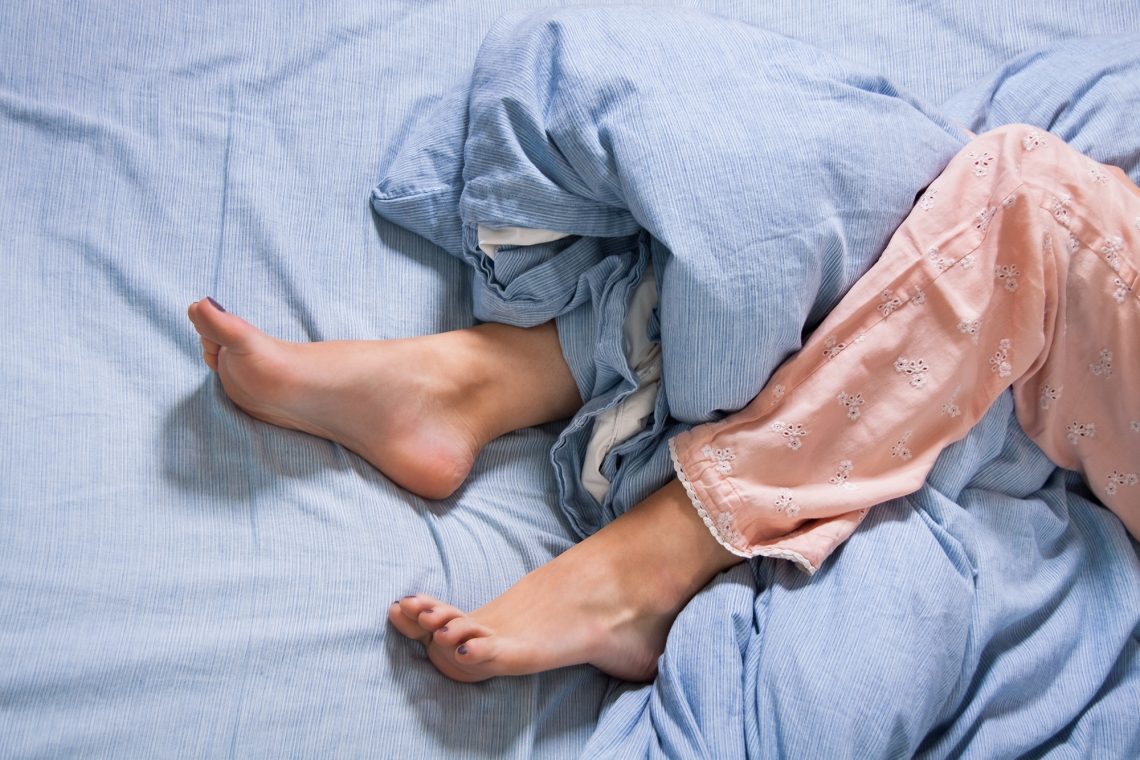 Most of us experience a night of poor sleep from time to time without too much fuss. An extra cup of coffee the next morning and we’re good to go. But for up to 40 percent of Canadians¹, sleep disorders are a real problem that affect their quality of life. Sleep disorders can include a number of conditions that prevent people from getting restful and restorative sleep. Left untreated, they can lead to further, often serious, health consequences.
Most of us experience a night of poor sleep from time to time without too much fuss. An extra cup of coffee the next morning and we’re good to go. But for up to 40 percent of Canadians¹, sleep disorders are a real problem that affect their quality of life. Sleep disorders can include a number of conditions that prevent people from getting restful and restorative sleep. Left untreated, they can lead to further, often serious, health consequences.
How can you tell the difference between an occasional night of insomnia and a true sleep disorder? Start by learning about the symptoms of the most common sleep disorders.
- Excessive daytime sleepiness
- Unrefreshing sleep
- Poor concentration
- Morning headaches
- Feelings of depression or anxiety
- Mood swings
- Forgetfulness
- Weight gain
- Frequent nighttime urination
- Sexual dysfunction
- Insomnia
The most common is insomnia disorder. It’s important to note while insomnia itself can be a disorder, it can also occur as a symptom of other sleep disorders, such as sleep apnea. Having trouble sleeping once in a while is common and often has a clear cause, such as stress or poor sleep habits. More than 40 percent of adults aged 18 to 64 report occasional trouble falling or staying asleep², but more than this is needed to diagnose true insomnia disorder.
1. Do you experience at least one of these nighttime symptoms?
- Trouble falling asleep
- Trouble staying asleep; frequent awakenings or trouble returning to sleep
- Waking up earlier than you want and unable to fall back asleep
- Fatigue or low energy
- Sleepiness
- Impaired attention, concentration, or memory
- Mood disturbance
- Behavioural difficulties
- Impaired occupational or academic function
- Impaired interpersonal or social function
3. And, do you experience these at least three nights a week for at least three months?
If so, you’ve likely got insomnia disorder.
If your symptoms don’t meet the criteria for a disorder, you might be experiencing paradoxical insomnia – a condition where the individual is actually getting more sleep than what they perceive.
There are two types of sleep apnea – obstructive sleep apnea (OSA) is the most common; it occurs when airways are blocked during sleep, breathing stops and sleep is interrupted. The less common type of sleep apnea is central sleep apnea (CSA); in this case, breathing stops because the brain isn’t sending proper signals to the breathing muscles.
OSA is characterized by regular snoring, choking or gasping in sleep (more likely to be noticed by the sleeping partner) and dry mouth. People with CSA, on the other hand, experience abnormal breathing patterns, but not necessarily snoring.
Insomnia, especially waking up throughout the night, is a common symptom of both kinds of sleep apnea. A proper diagnosis is essential in order to find the right treatment.

Many people have what is considered an irregular sleep schedule – parents of young children, shift workers, etc. This irregularity can confuse the body’s circadian rhythm, or natural sleep-wake cycles. Symptoms of circadian rhythm disorders include:
- Insomnia
- Reduced sleep quality and quantity
- Difficulty waking up in the morning
- Excessive daytime sleepiness
- Cognitive impairment
The different types of circadian rhythm disorders include:
- Jet lag: although temporary, jet lag is a common phenomenon for people travelling between time zones that disrupts a person’s usual falling asleep and waking patterns.
- Advance sleep-wake phase disorders (ASPD) and delayed sleep-wake phase disorders (DSPD): these occur when circadian rhythms shift earlier or later than what is considered “normal”. In addition to the other symptoms listed above, people with ASPD (more often older adults) or DSPD (typically found in teenagers or young adults) may experience social difficulties because their sleep schedules don’t align with others in their lives.
- Shift work disorder: the sleep challenges experienced by shift workers is significant and frequent enough that it is considered a disorder in its own right. This happens when people rotate between day and night shifts, confusing the body’s circadian rhythm. These people also show higher than normal rates of ulcers, fatigue-related accidents, absenteeism and depression.
Start by getting an accurate and in-depth analysis of your sleep. The only way to really know what’s going on while you sleep is to get a sleep study. Today, new options are available that are more convenient and comfortable than ever before, without sacrificing the quality or accuracy of the assessment. With this information in hand, your physician can help you treat your sleep problems. Because the symptoms of many sleep disorders overlap, proper diagnosis is essential. And in some cases, sleep disorders can be a symptom of another medical or mental health condition.
Only Cerebra sleep study provides the most thorough testing for a proper assessment, done with convenience in the comfort of your own home.
1. Université Laval. (2011) Sleep disorders affect 40 percent of Canadians.” ScienceDaily, 8 September 2011. Retrieved July 23 2019 from https://www.sciencedaily.com/releases/2011/09/110908104005.htm.
2. Government of Canada. (2017) Duration and quality of sleep among Canadians aged 18 to 79. Retrieved from the Government of Canada website: https://www150.statcan.gc.ca/n1/pub/82-003-x/2017009/article/54857-eng.htm
American Academy of Sleep Medicine. (2014) International Classification of Sleep Disorders – Third Edition (ICSD-3). Darien, Illinois: American Academy of Sleep Medicine
